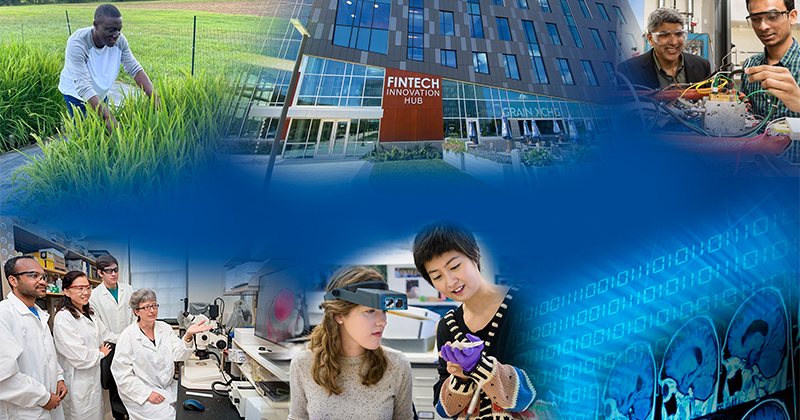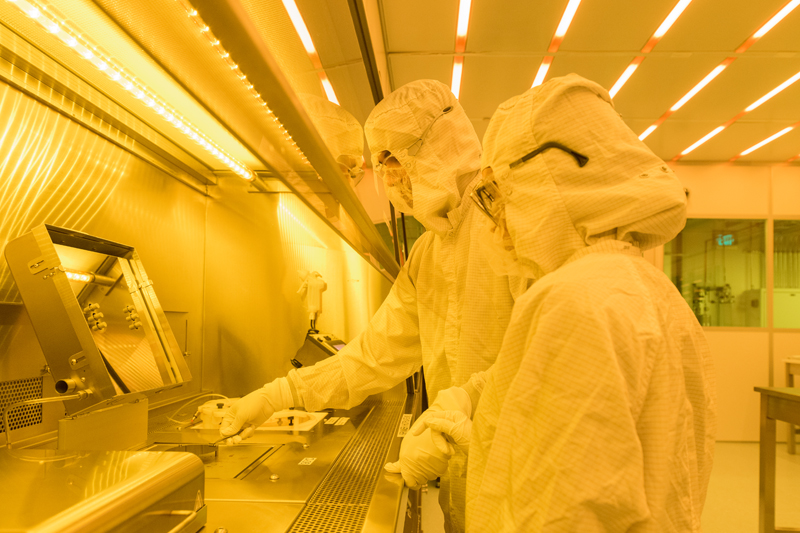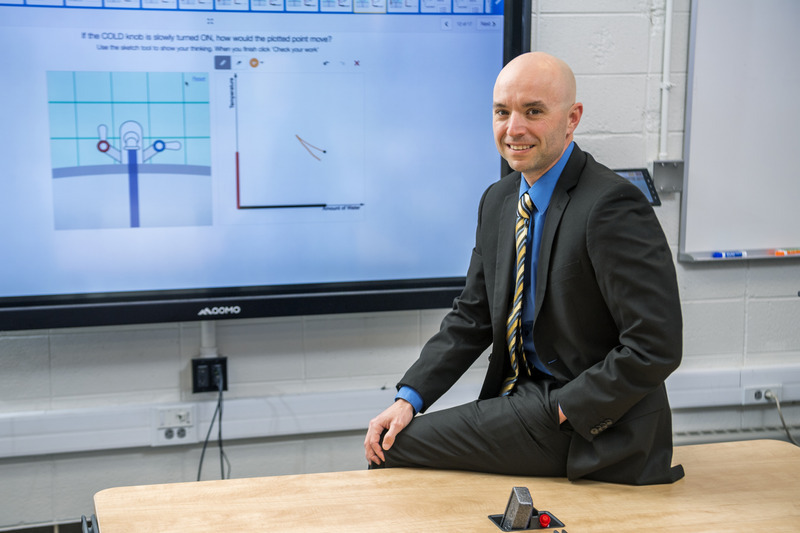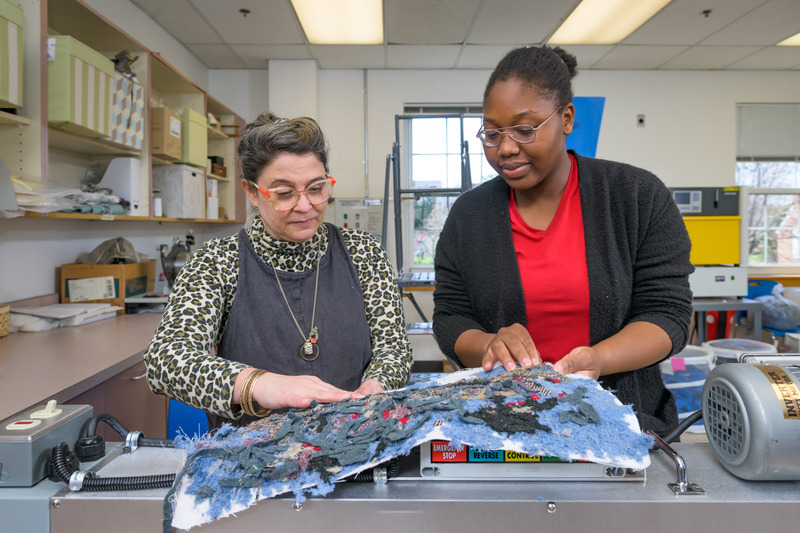


University of Delaware rises in research rankings
Photo illustration by David Barczak | Photos by Evan Krape and Kathy F. Atkinson December 04, 2023
UD leaps forward in NSF HERD Survey
The University of Delaware’s reputation as a research powerhouse just got another big boost.
In the latest Higher Education Research and Development (HERD) Survey released by the National Science Foundation, UD ranks 47th out of 626 academic institutions across the United States when comparing non-medical school R&D expenditures.
The HERD Survey provides this “apples to apples” comparison, as not all universities and colleges have medical schools (including UD).
Rising from #74 to #47, UD now ranks in the top 8% nationally for R&D activities. UD is in the immediate company of Utah (46), Rutgers (45), Iowa State (44), SUNY, Polytechnic Institute (43) and Stanford (42) and ranks above Rockefeller University (48), University of California, Irvine (49), Washington State University (50), University of Pittsburgh (51) and University of Missouri (52). More than half of these schools (noted in bold) are members of the elite Association of American Universities (AAU).
Also, the University is now 78th in total research spending, up from 109th, and 52nd among public universities, up from 73rd.
The survey covered the 2022 academic fiscal year, spanning July 1, 2021, to June 30, 2022. During this period, UD’s reported R&D expenditures increased 59% over the previous year, from $231 million to $368 million.

“The University of Delaware is deeply committed to advancing innovation and problem-solving,” UD President Dennis Assanis said. “This latest ranking reflects the drive and ingenuity of our faculty, staff and students, as well as the significant investment UD is making to support their critical work — from our world-class core facilities to our successful research development programs. We congratulate the UD research community for reaching this latest milestone.”
Investing in research and innovation
The HERD Survey, which is conducted by the National Science Foundation, is the primary source of information on research and development expenditures at U.S. colleges and universities. These expenditures provide a nationally accepted measure for comparing R&D activities across institutions.
But what are these R&D expenditures, exactly? Think of them as investments — some funds are provided by external sponsors, such as competitive grants awarded by federal and state agencies to research investigators; some funds are provided by universities themselves, supporting investigators with a variety of research needs.
During the past five years, UD has hired 460 faculty, providing “startup” funds to help new researchers establish their labs and procure the equipment essential to their work.
Seed grant programs offered by the Research Office, research institutes and centers, colleges and departments provide opportunities for researchers to explore an idea or pursue proof-of-concept studies that may yield promising findings, laying the foundation for scientific publications and successful proposals to an external sponsor.
Tuition remission is yet another important way the University supports graduate students who play a critical role in UD’s research engine, working on projects with their advisers through a university fellowship or graduate assistantship.
Developing a strong research community at UD
To further grow and nurture the University’s research enterprise, the Research Office offers a variety of professional development programs, such as the NIH Academy, which prepares researchers to become successful grantees of the National Institutes of Health through a program of mentoring and proposal preparation, and the NSF CAREER Academy, a six-month proposal preparation program assisting tenure-track faculty in competing for one of the National Science Foundation’s most distinguished funding awards for early-career scholars.

Providing researchers with access to core facilities — cutting-edge instruments and services that are shared resources — is yet another valuable way UD works to develop a strong research community across campus. Increasingly, these sophisticated facilities, providing genome sequencing to nanofabrication to brain imaging, are becoming critical state, regional and national assets. UD has 11 centrally operated core facilities and another eight cores embedded in colleges, with expert faculty and technicians on staff who assist researchers with their studies and provide training in the use of high-end microscopes and other advanced tools.
“The Research Office is here to support our investigators in their endeavors, and we applaud their success,” said Kelvin Lee, interim vice president for research, scholarship and innovation. “Our team has the expertise and dedication to help move this important work forward, from identifying grant opportunities to protecting and promoting UD discoveries and inventions.”
Already this fiscal year, 520 research proposals have been awarded to UD by various agencies. Every college at UD is part of the action, with topics ranging from high-interval training to recover walking after a stroke, to recycled textile and apparel manufacturing.
The University of Delaware’s commitment to uncovering new knowledge and problem-solving has taken its research teams from the bottom of the sea to outer space, with impacts on local to international levels.
From its pioneering role in the early development of the Internet to a Nobel Prize-winning chemical reaction in global use, UD impacts the world in many positive ways. Whether promoting civil discourse, preserving our cultural heritage or innovating solutions for a more sustainable planet, UD researchers are putting their expertise and talent to work for the public good.

Contact Us
Have a UDaily story idea?
Contact us at ocm@udel.edu
Members of the press
Contact us at 302-831-NEWS or visit the Media Relations website

